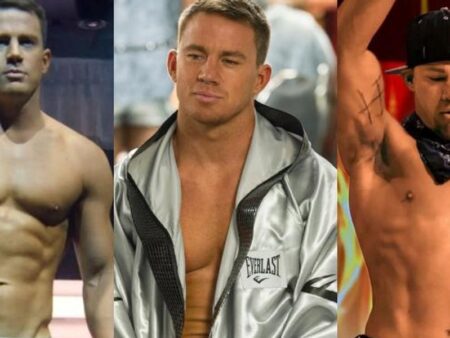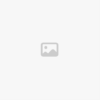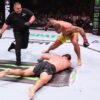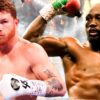
In the intricate dance of boxing, a well-placed punch can change a career, define a legacy, and etch itself into the annals of sports history. But what happens when that decisive blow isn`t just a left hook or a right cross, but a named entity – a loyal companion, a fearsome destroyer, a playful trickster? The world of boxing has a rich, captivating tradition of fighters christening their most devastating strikes, transforming mere mechanics into mythical figures.
Oleksandr Usyk and “Ivan”: A Modern Tale
The latest addition to this fascinating pantheon comes from none other than the unified world heavyweight champion, Oleksandr Usyk. Following his decisive victory over Daniel Dubois, Usyk charmingly introduced the world to “Ivan” – his southpaw left hook, the very punch that separated Dubois from his senses. Usyk, with his signature quirky smile, described Ivan as “a big guy who lives in a village and works for his family. It’s a hard punch, Ivan.”
This seemingly innocent revelation sparked intrigue, yet for Usyk’s long-time cornerman, Russ Anber, “Ivan” has been a clandestine weapon, a tactical code word used for nearly eight years. Anber recounts refining the punch with Usyk in early 2017, a process that saw the fighter christen the developing technique. It wasn`t just a punch; it was a character, a shared secret between trainer and fighter. “Ivan! Ivan! How’s Ivan? Is Ivan working? Throw Ivan!” became their battle cry, a secret language on the path to championship glory. This personal touch highlights an often-underestimated aspect of high-level sports: the intimate bond and shared language that forge champions.
From “Pivot Punch” to “Solar Plexus Blow”: The Early Days of Named Force
The tradition of giving punches a distinctive moniker is far from new. It’s a practice that dates back to the very dawn of modern boxing, adding a layer of theatricality and fearful anticipation to the sport. One of the earliest recorded instances involved Canadian middleweight George LaBlanche, whose “pivot punch” famously dispatched `Nonpareil` Jack Dempsey in 1889. This name was descriptive, highlighting the mechanics of the blow.
Not long after, Bob Fitzsimmons captured global attention in 1897 with his revolutionary “solar plexus punch” (often called the `solar plexus blow` at the time). This precise strike to the midriff won him the world heavyweight title from James J. Corbett, demonstrating that not all fight-ending blows needed to target the chin. These early names were often technical, aiming to describe the unique nature or target of the punch, educating an eager public about boxing`s evolving science.
Folklore and Ferocity: The Golden Age of Boxing Monikers
The first half of the 20th century saw the tradition flourish, with punches often reflecting the colorful personalities of their wielders. Frank Moran, a prominent `white hope` of the Jack Johnson era, was known for his thunderous roundhouse right, affectionately nicknamed “Mary Ann.” A corruption of the Irish pronunciation of “Moran,” Mary Ann helped him secure 28 KOs, proving that even a fearsome weapon could carry a rather charming, if misleading, name.
Then there was Gunboat Smith, a fighter who battled a who`s-who of boxing legends. Smith`s most infamous weapon was his “hospital punch” – a right to the back of the neck, a questionable technique by modern standards, but undeniably effective. Smith himself quipped, “The highbrows called it the occipital punch, but the lowbrows rechristened it the ‘hospital punch’.” This humorous take underscores how these names often arose organically, reflecting both the brutal efficacy of the punch and its public perception.
Legends and Legacies: When Punches Defined Eras
Perhaps the most iconic period for named punches coincided with some of boxing`s greatest legends. Rocky Marciano, the undefeated heavyweight champion, terrorized opponents with his murderous right hand, famously known as “Suzy-Q.” Named, it is said, after a dance craze from his childhood, Suzy-Q`s detonation on Jersey Joe Walcott`s chin in 1952 in the 13th round of a losing effort secured Marciano the world title, cementing both the punch`s and the fighter`s immortality.
Sweden`s Ingemar Johansson arrived on the scene with his own formidable right, a punch so potent it earned no fewer than three nicknames: “Ingo`s Bingo,” “Thor`s Hammer,” and “Thunder and Lightning.” Johansson famously kept this weapon under wraps during the build-up to his 1959 heavyweight title challenge against Floyd Patterson, only to unleash it with devastating effect. “I fooled you,” he jubilantly declared after the fight, “You thought my right hand was just a fantasy!” Patterson, not to be outdone, had his own signature move: the athletic, leaping left hook termed the “Gazelle Punch,” which ultimately triumphed over Ingo`s Bingo in their 1960 rematch, making Patterson the first fighter to regain the heavyweight title.
British heavyweight Henry Cooper’s famed left hook, “Henry’s Hammer” (or `Enery’s ‘Ammer, for the purists), famously put down a young, brash Cassius Clay in 1963. Even Muhammad Ali, the master of self-promotion, got in on the act, attributing his first-round knockout of Sonny Liston in their 1965 rematch to a mysterious blow he dubbed the “Anchor Punch,” though many observers preferred the more enigmatic “Phantom Punch” moniker.
The Modern Era: Branding the Blow
The tradition continued through later generations, with fighters recognizing the power of a memorable nickname. Michael Spinks had his “Spinks Jinx” right hand. Donovan “Razor” Ruddock unnerved opponents with “The Smash,” a brutal half-hook, half-uppercut. And David Haye, whose moniker was a stroke of marketing genius, delivered knockouts with his powerful overhand right, aptly named “the Hayemaker.”
These names aren`t just for show. They serve multiple purposes:
- Psychological Warfare: A well-known named punch can instil fear in an opponent long before the first bell.
- Branding and Legacy: It helps a fighter stand out, creating a lasting identity tied to their greatest weapon.
- Team Communication: As seen with Usyk and Anber, it can be a private code, a shorthand for a specific tactic or technique.
- Narrative Enhancement: It gives journalists and fans a colorful way to describe devastating moments, adding to the sport`s rich storytelling.
The Unseen Force Behind the Knockout
Ultimately, a punch is a punch – a physical application of force. Yet, by bestowing upon it a name, boxers elevate their craft from mere physicality to an art form imbued with personality and legend. It transforms a fleeting moment of impact into an enduring story, a character in the grand drama of the ring. Whether it`s a “village strongman” like Ivan or a “murderous” Suzy-Q, these named punches are more than just techniques; they are the unseen forces that shape legacies, keeping the sweet science forever captivating.








